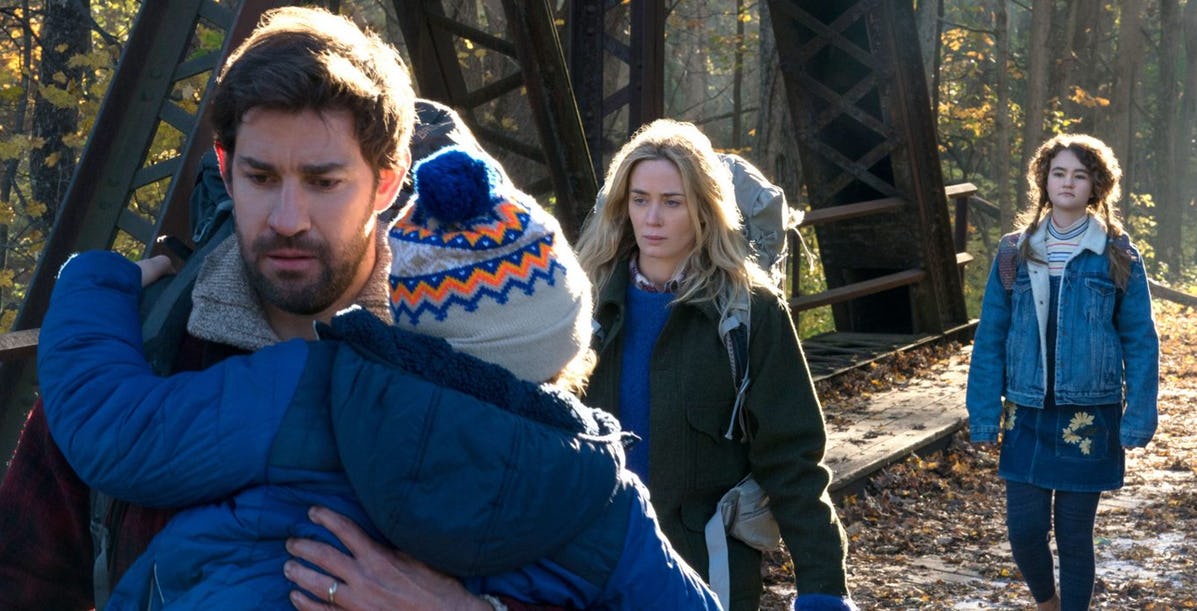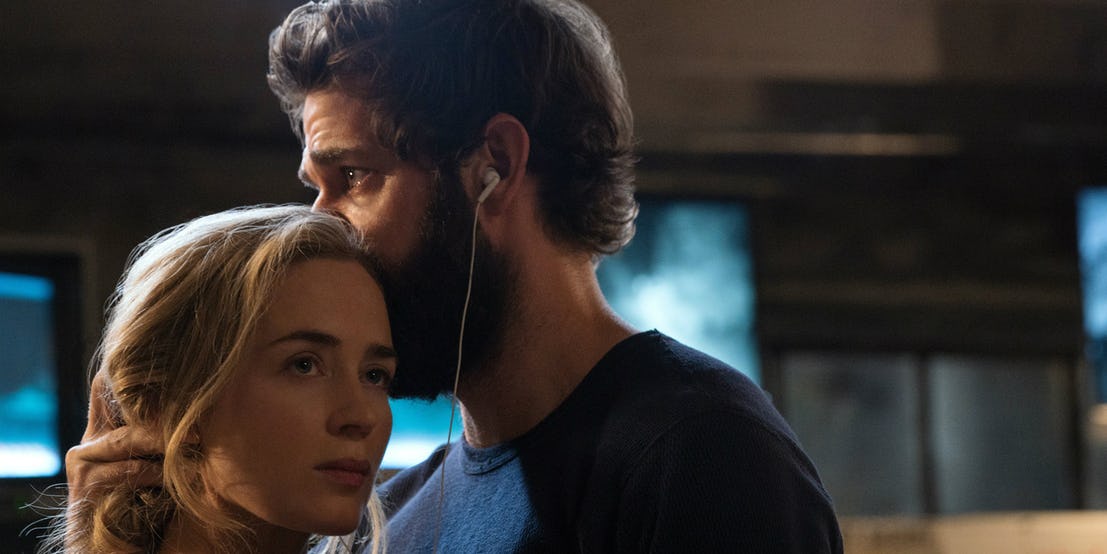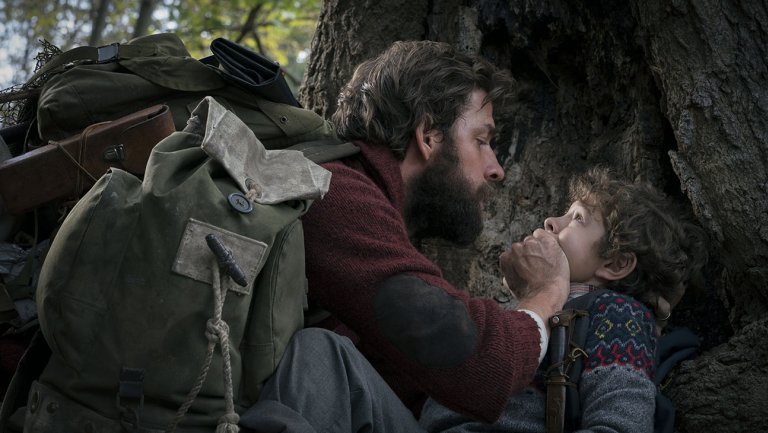From the first moment and during the following minutes, the staging establishes an inhospitable stage of great danger, in which silence has become the only means of survival, and in which relations have adapted to an unprotected reality and stripped of a certain portion of free will.
A QUITE PLACE (Imdb Entry)
The landscapes and each interior portrayed maintain a dense atmosphere, full of condemnation and expectation, of imminent risk: the forms and textures, the colours and sounds that are deprived of us. The camera’s point of view, as well as the composition of the painting, suggest intimacy but also the repression that the protagonists live through.
The sound design, on the other hand, full of silence, incites tension and the sensation of an incomplete life. The dialogues, scarce due to the situation the characters go through, appear fortuitously, reminding the viewer that their absence is, in fact, an anomaly, as they arrive at such a point that we have become accustomed to the silent. And the musical tracks, as well as the sound effects, struggle to make the spaces more deafening, absorbent; they advance gradually and imperceptibly and keep the attention of the spectator in every detail.


All this can be seen during the whole movie, but in these two scenes you can clearly see how the director plays with the importance of sound in the narration of the story. In this scene everything is silent, creating tension, and all of a sudden, only the sound of the child’s toy is heard, warning us of the danger that comes next.
The other scene that I have selected to exemplify the importance of the absence of sound in this film. We see a scene almost completely silent, we can only hear some ambient sound, in this we see a couple dancing but without music, and in fact does not need. the silence here we suggest intimacy but also the repression experienced by the protagonists.

In short, silence in the cinema can and must be considered a sound resource that, on many occasions, is much more expressive than noise, words or music.
As said Robert Bresson, a great defender of silence as a cinematographic resource:
“The most beautiful thing is silence, although not just any silence. For it to have intensity, silence must be carefully prepared…”
V. F. Perkins considered that:
“Only with color as the available source can we consider the use of black and white photography as the result of a conscious artistic decision. Only in sound cinema can the director use silence to achieve a dramatic effect.”
As we see, we must always take into account in our cinematographic projects that the silence is not just a pause, is a resource to be used with own meaning.
- UN LUGAR EN SILENCIO: la ausencia de sonido como medio narrativo | Reseñas | Sector Cine. (2018). Retrieved from https://sectorcine.com/noticias/resena/resena-un-lugar-en-silencio/
- Morrison, M., Moran, S., & Mithaiwala, M. (2018). Why The Parents In A Quiet Place Had [SPOILER]. Retrieved from https://screenrant.com/quiet-place-movie-baby/
- Abrams, S. (2018). Did ‘A Quiet Place’ Take Enough Risks?. Retrieved from https://www.hollywoodreporter.com/heat-vision/a-quiet-place-spoilers-a-deep-dive-twists-1102988
- A Quiet Place (2018) – IMDb. (2019). Retrieved from https://www.imdb.com/title/tt6644200/
